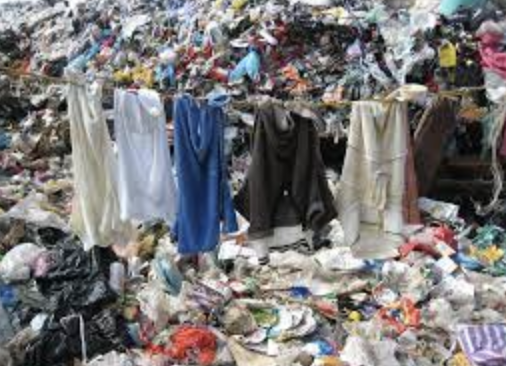The Fast Fashion Phenomenon

Clothes, in good condition, are starting to be disposable in dumps.
Not one generation has been as connected to the internet and social media as Generation Z, anyone born between 1997-2012. We are constantly consuming content from all over the world and witnessing the new trends and micro-trends. The problem is that micro-trends are temporary and harmful to the community. Many of these trends are popularized by social media influencers who publicly promote products on the internet. Various social media platforms help advertise these trends and spread them around the world faster than ever.
Fast fashion brands such as Shein, Fashion Nova, H&M, and several other stores feed into these trends for profit. Fast fashion is the mass-production of clothes at a rapid pace, in line with demand. Catering to constant new styles takes a lot of manpower, so often, these unethical brands practice child labor. Many companies abuse the human rights of children for the sake of an abundance of clothes. Children around the world are exploited for fashion under coercion. Junior, Sarah Baraghi said, “When I’m shopping, I don’t really think about the consequences. I don’t see the negative effects or the behind-the-scenes whenever I buy an article of clothing”.
Junior Susanna Pogosyan said, “This overproduction of clothes ruined the fashion industry. I used to be incredibly passionate about fashion until these fast trends began.” She adds that it’s hard to keep up with what’s considered “new” in society. As the amount of clothing produced rises, the worth of each piece diminishes and is quickly replaced.
To further encourage current trends, the word ‘cheugy’ is now being used to criticize certain clothes that are “out of date” or not trendy. This word is frequently used as an insult to shame and force people into the latest fashion. Whenever called ‘cheugy’one may resort to buying a different wardrobe that is considered acceptable. Later, that same wardrobe will no longer be adequate because society deems it so.
All things considered, there are many things we can do to prevent further damage. We can stop engaging in temporary trends, spend money on environmentally-friendly companies, and thrift clothing. To reduce your environmental effect, consider purchasing fewer, longer-lasting items. Staying oblivious to fashion corruption will only worsen the problem. It is evident that fast fashion slows down our societal progress so let’s do our part to make the Earth a better place for ourselves and future generations.

Interests/hobbies? I enjoy listening to music, playing volleyball, and debating.
Dream Destination? New York
In 20 years... I will be a famous attorney.
Favorite...










